52 weeks. 52 different writers. 2 trade paperbacks or hardcovers a week. Each week I’ll take a look at a different writer and read two different collected editions from within that person’s repertoire to help in the examination of their work. Mike Mignola is this week’s writer so without further ado let’s get this underway.
Mike Mignola
Mike Mignola is best known as being the creator of the popular paranormal horror character, Hellboy. The character of Hellboy first burst on to the scene back in 1994 in a story written and drawn by Mignola but scripted by John Byrne. Mignola has become synonymous with this character and the universe he’s built around him including other characters like Abe Sapien or the B.P.R.D. One thing that sets Hellboy out from other characters in comics is the format the bulk of his story have been told in. Mignola focuses in on mini-series more so than ongoing series, creating the opportunity for people to jump into the Hellboy universe whenever they choose. Today we look at the only true (and current) ongoing series in Hellboy’s publishing history, Hellboy In Hell: The Descent.
Hellboy In Hell: The Descent
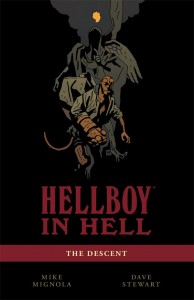 This collection of Hellboy stories picks up immediately after the miniseries, “The Fury” wherein Hellboy kills a dragon, has his heart stolen and then plummets to Hell. Before reaching Hell, Hellboy ends up in the land between Earth and Hell, being courted around by a mysterious character before being visited by three ghost-like characters. Hellboy’s adventures take him all over this realm, from Abyss to Pandemonium in the heart of Hell.
This collection of Hellboy stories picks up immediately after the miniseries, “The Fury” wherein Hellboy kills a dragon, has his heart stolen and then plummets to Hell. Before reaching Hell, Hellboy ends up in the land between Earth and Hell, being courted around by a mysterious character before being visited by three ghost-like characters. Hellboy’s adventures take him all over this realm, from Abyss to Pandemonium in the heart of Hell.
Hellboy In Hell is a grim, dark yet artistic title which is something that will surprise first time readers who think Hellboy is just some red dude with a big hand who punches people. That happens to, but there’s more to the character than just that. The entire volume is littered with allusions to famous literary works, ranging from the tale of A Christmas story to Shakespearean stories. It’s hard to argue to the artistic value of including mentions to these classic pieces of work into something like Hellboy In Hell as it gives the entire series an odd layer of extra fiction to it. You can’t help but appreciate the fact that, even though these things are briefly referenced or mentioned, it’s still a respectable move from a storyteller the likes of Mignola. It’s this flare for twisting these stories within the framework of his own that draw people into Mignola’s stories.
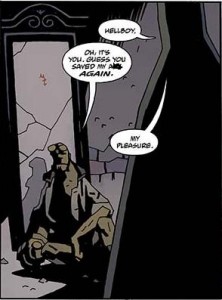
The peculiar mind of Mignola remains on full display through this entire series of stories which are broken into two separate parts across five chapters. The first four chapters are what I’d consider the first “part” of the story with chapter five being its own independent story within the world that Mignola crafts. During this first part Mignola is able to present some interesting themes that most readers may not be used to. In sending Hellboy into Hell, the reader might imagine fire, brimstone and the smell of sulfur in the air but that is hardly what you get. The setting Mignola establishes may be the most original idea of what Hell is that I’ve ever seen in comics. To an even further point, Mignola doesn’t just restrict himself to dropping Hellboy straight into Hell, first choosing to have him briefly inhabit the land in between, known as The Abyss. It’s the use of settings outside of what an average reader would be used to that make this volume an engaging read. The Hell that Hellboy ends off in by the end of the story has architecture that looks remarkably like a normal place. To contrast that there’s Pandemonium, a kingdom that is rightfully Hellboy’s and falls directly in the heart of Hell. Pandemonium does have that dark and eerie feeling to it, bringing forth the colours of red and black that you’d expect but the place is also much more hollow than what you’d picture the heart of Hell to be like.
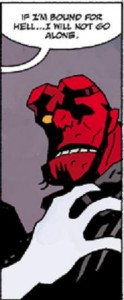 For the scripting of these stories, you can’t help but feel like you’re missing something at times, especially if you aren’t a regular Hellboy reader. The story wisely starts out with a brief one-page summary for any new readers who might not have any idea why Hellboy is going to Hell in the first place. This summary is blunt, concise and to the point. It eliminates the need to read anything before this volume as you get the picture very clearly. From there, the story picks up a pace that might make you feel lost as stated a few sentences ago. There seems to be an underlying subtext laced throughout much of the volume that you have to pay attention to very closely at times to make sure you get what is either happening or just happened. Mignola chooses to not hold your hand and forces the reader to engage their mind a bit to ensure they keep up with the story. In some instances it works greatly but there are other instances where if you aren’t paying attention you’re forced to go back and make sure you picked up on what was being laid out for you. The perfect example of this is directly at the end of Chapter four, where a mysterious ally of Hellboy begins conversing with a character who is never properly introduced into the story other than during that scene. It’s left to the reader to conclude who this character is without the social cue of what their name is. For people who read just to conquer a book instead of read it to take something away from it, this scene can appear confusing and disjointed instead of oddly brilliant.
For the scripting of these stories, you can’t help but feel like you’re missing something at times, especially if you aren’t a regular Hellboy reader. The story wisely starts out with a brief one-page summary for any new readers who might not have any idea why Hellboy is going to Hell in the first place. This summary is blunt, concise and to the point. It eliminates the need to read anything before this volume as you get the picture very clearly. From there, the story picks up a pace that might make you feel lost as stated a few sentences ago. There seems to be an underlying subtext laced throughout much of the volume that you have to pay attention to very closely at times to make sure you get what is either happening or just happened. Mignola chooses to not hold your hand and forces the reader to engage their mind a bit to ensure they keep up with the story. In some instances it works greatly but there are other instances where if you aren’t paying attention you’re forced to go back and make sure you picked up on what was being laid out for you. The perfect example of this is directly at the end of Chapter four, where a mysterious ally of Hellboy begins conversing with a character who is never properly introduced into the story other than during that scene. It’s left to the reader to conclude who this character is without the social cue of what their name is. For people who read just to conquer a book instead of read it to take something away from it, this scene can appear confusing and disjointed instead of oddly brilliant.
You can count the number of truly meaningful characters in this volume on one hand. The overall character total might be something that needs a two-handed count but reassured, not many of them are that important. Hellboy is obviously in the spotlight at all times but aside from him, only his mysterious ally and Hellboy’s uncle, Astaroth, are the other characters who heavily impact the developments of this story. Astaroth is only briefly in this volume but it is his inclusion that helps provide what is one of the better issues of this collection of stories. He is a puppet master, pulling the strings of a few characters to manipulate his own personal gain. Hellboy’s mysterious ally is a little bit all over the place here, popping up in varying issues and chipping away at a bit of the puzzle that Mignola has placed in front of the reader. Above all else though, for the characters, this story is all about how Hellboy handles one problem to the next now that he’s stuck in Hell. It’s just impossible to invest in some of these other characters when their places feel so abrupt and meaningless.
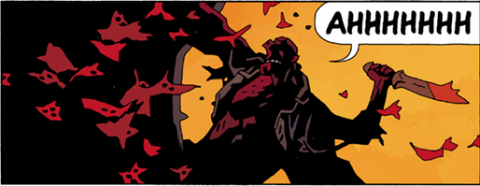
Best Character: Hellboy (Duh!)
Best Line of Dialogue/Caption: “It’s hard. I know. You’ve lost the people that care about you, lost a whole world, but you might consider this–for the first time you are truly free.” – Edward Gray
Best Moment/Scene: Hellboy vs. his brothers – Issue 3
Best Issue: Issue 3. What makes issue 3 so great? It’s the most action packed and interesting issue of the entire collection in my opinion. You see the machinations of Hellboy’s uncle come to fruition, a brotherly beat down, a startling revelation that turns the story (and Hellboy’s reason for being in Hell) on its head. This issue just feels like the most polished on the lot, with plenty of great characters beats, fast paced moments and defeat even in the eyes of victory.
Why You Should Read It: To be quite honest, at times this volume can be a little daunting for new Hellboy readers. But it’s still a great Hellboy story for readers to jump on at so long as you’re prepared to pay attention. It’s got plenty of unique and noteworthy concepts at play here, presenting what’s easily the most interesting depiction of Hell I’ve seen in comics. Mike Mignola has an odd, twisted, yet beautiful mind that’s on full display in this volume. You should read this simply to take in the genius of the universe that Mignola has crafted.
The Amazing Screw-On Head and Other Curious Objects
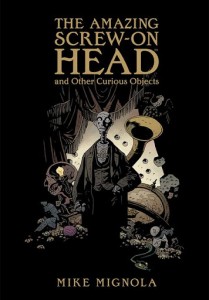 As mentioned in the previous examination of “Hellboy In Hell”, Mignola has a twisted yet beautiful mind when it comes to the stories he tells. His collection of short stories in “The Amazing Screw-On Head and Other Curious Objects” is no exception and quite easily showcases his fantastic talent to do weird but amazing stories. This volume collects multiple stories ranging from a few to several pages in length and even features one written by his seven year old daughter, Katie Mignola. As he states in the back of the book, he was asked to make a short story for a Dark Horse anthology when his daughter returned home telling him all about a picture she drew at school which would go on to inspire the story “The Magician and The Snake”. How many writers can say they got to work with their daughter to have a comic story published by a major publisher? Not many.
As mentioned in the previous examination of “Hellboy In Hell”, Mignola has a twisted yet beautiful mind when it comes to the stories he tells. His collection of short stories in “The Amazing Screw-On Head and Other Curious Objects” is no exception and quite easily showcases his fantastic talent to do weird but amazing stories. This volume collects multiple stories ranging from a few to several pages in length and even features one written by his seven year old daughter, Katie Mignola. As he states in the back of the book, he was asked to make a short story for a Dark Horse anthology when his daughter returned home telling him all about a picture she drew at school which would go on to inspire the story “The Magician and The Snake”. How many writers can say they got to work with their daughter to have a comic story published by a major publisher? Not many.
This volume collects “The Amazing Screw-On Head”, “The Magician and The Snake”, “Abu Gung” and a few other short stories in a beautiful collection by the aforementioned Mike Mignola. Each story is simple and easy to follow, but none steal the spotlight more than “The Amazing Screw on Head” and “The Magician and The Snake”. The Amazing Screw-On Head follows a robotic screw-on head as he tries to stop his evil nemesis, Emperor Zombie from obtaining an all powerful jewel that will grant him special powers. The Magician and The Snake follows the greatest magician ever who makes three floating objects disappear. He confesses to his snake partner that said shapes return one day and on that day he will die.
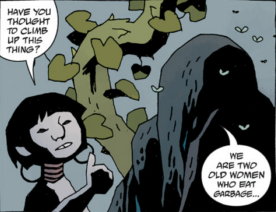
What is great about all these short stories is they are all uniquely Mike Mignola. There’s no other writer on the face of the Earth who could’ve crafted these collections of stories in such a way. These stories are all easy to read but still complex in a sense as with someone like Mignola, you’re always looking for a different sense of story from what he initially intended or you received. The collection of stories fall in order from the strongest to the weakest for the most part, relying on the tales of Screw-On Head or the Magician to carry you towards the end of the volume as the tales taper off in length and quality. With that in mind, the other remaining stories in the back half of the volume are still nice little palette cleansers.
One of the nicest aspects of this volume is that Mike Mignola shares the storytelling duties with his daughter during “The Magician and The Snake”. It is a simple tale that isn’t telling of the youth of its author as Katie Mignola, aged seven, immerses you in the short story with plenty of emotion. As a reader part of you almost wish the story wouldn’t end due to its gentle hearted nature, serving to remind you how nice it was to be a child and how it seemed to be an eternity ago. It isn’t a stretch to imagine that young Katie has a bright future in comics with some guidance from her father.
Having the stories fall in the manner that they do makes them feel slightly disjointed. You’re not sure whether or not these stories all tie together, seemingly occur in the same universe as one another or that some of them just plain don’t matter at all. Obviously, being that these are short stories, you should not read into something like that too much as they are meant to be enjoyed more than anything else. Enjoyment is certainly something this book gets right as from beginning to end this collection of stories is just something nice to read. There is plenty of off-brand humour present, especially in “The Amazing Screw-On Head” story. Mike Mignola brings his different and perverse style of comedy to every story present. It falls perfectly within his realm of storytelling, fusing dark and twisted worlds with oddball characters. There is something about Mignola’s stories and the way he writes them that makes me want to compare him to Tim Burton in the sense that both men like to play in these beautifully demented settings with an intriguing cast. The only difference between the two men is that Mignola just seems to be better at it as you never grow tired of the distinct ideas that he brings to the table.
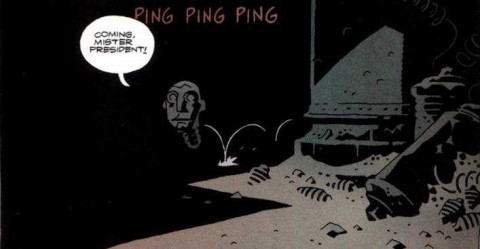
Best Character: The Amazing Screw-On Head
Best Line Of Dialogue/Caption: All really intelligent people should be cremated–” – Mister Groin “–for the sake of national security.” – Screw-on Head
Best Scene/Moment: Abhu Gung kicks the devil from beanstalk
Best Issue/Story: The Magician and The Snake. Katie and Mike Mignola work as a daughter-father duo to provide a heartwarming tale that will crack a smile from even the hollowest of hearts. It’s heartfelt, sincere and beautiful in its simplicity.
Why You Should Read It: This collection of stories showcases Mignola’s craft in the best of ways. His humour and storytelling style are on full display here and will having you flipping the page intently for a volume that ends far too quickly for your reading pleasure. The story he shares the writing duties with with his daughter is a great moment in the volume and something that will warm your heart. Ultimately I’d compare this series of stories to something like a fairy tale. They feel timeless, as if you could read them to yourself over and over every night before resting your head for another day.

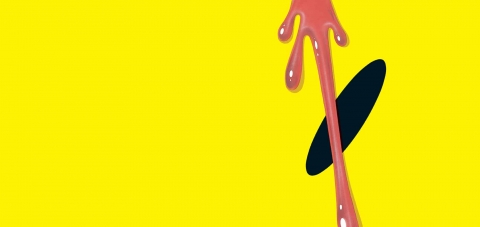
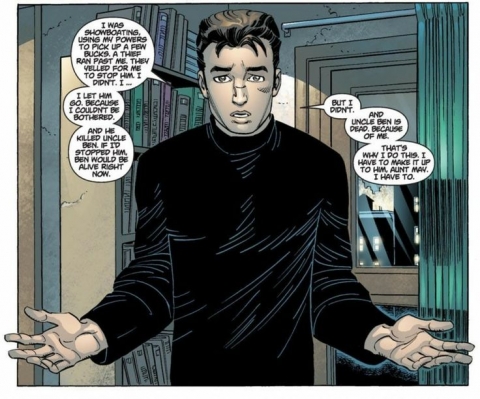
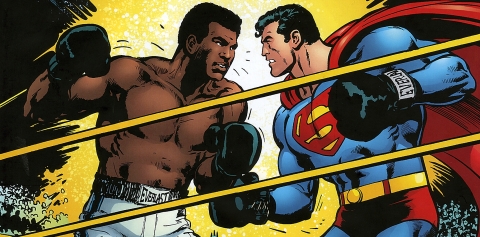
I never liked Mignola’s work when he was under DC/Marvel’s house style. But once he started doing his own thing… his work developed quickly into the dazzling style that he is now known for. Aside from being refreshingly unique, his sense of design and composition is unmatched. A true graphic illustrator, he is a master of hard edge rendering. Look at the way he uses background shadow to define foreground subjects.
Although the Hellboy books are a series of mini’s, they are actually story arcs and have continuous numbering inside so they are easy to track. Hellboy and the other related titles are the only books I collect now.